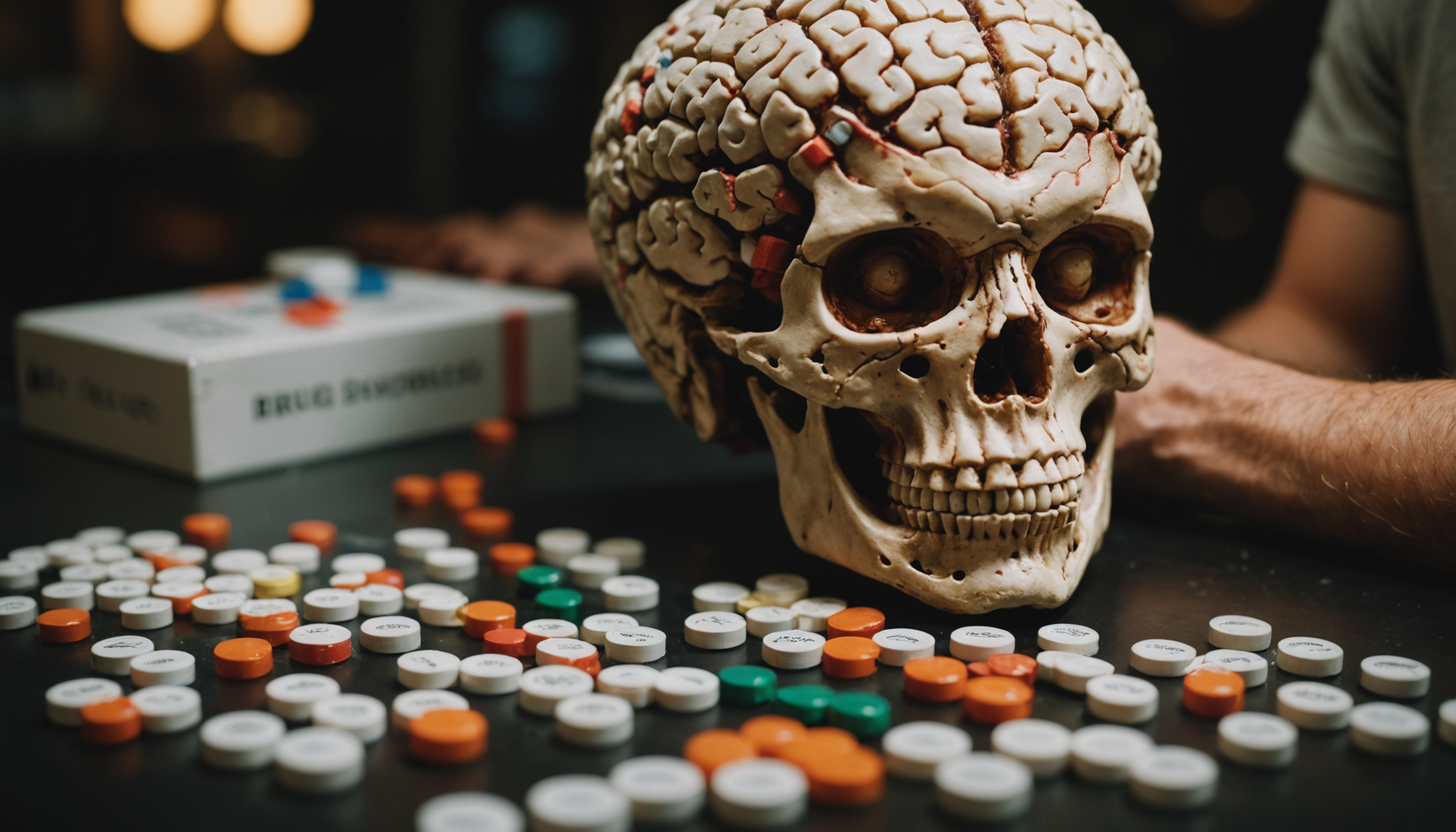
Report on Brain Structure and Substance Use Initiation in Adolescents: Implications for Sustainable Development Goals
Introduction
The relationship between brain structure and substance use initiation among adolescents has significant implications for public health and sustainable development. This report examines recent research challenging traditional brain disease models of addiction, emphasizing the importance of early intervention aligned with the Sustainable Development Goals (SDGs), particularly SDG 3: Good Health and Well-being.
Background
Traditional models of addiction suggest that the neurotoxic effects of psychoactive substances such as alcohol, nicotine, and cannabis cause brain changes that lead to compulsive substance use. However, a recent study published in JAMA Network Open proposes that brain differences associated with addiction may precede substance use rather than result from it.
Study Overview
- Participants: Nearly 10,000 children aged 9 to 11 years enrolled in the Adolescent Brain Cognitive Development (ABCD) Study.
- Methodology: Initial MRI scans were taken before any substance use was reported. Over the following three years, researchers tracked substance use initiation among participants.
- Findings: Approximately one-third of participants reported using alcohol, nicotine, cannabis, or other psychoactive substances before age 15.
Key Findings on Brain Structure and Substance Use
- Eight neuroanatomical features were identified as associated with substance use initiation and were present before any substance exposure.
- Contrary to previous studies on adult addicts, adolescents who initiated substance use had larger brains with more gray matter.
- A thinner prefrontal cortex was observed in early substance users, linked to impaired emotional regulation and working memory.
- Larger globus pallidus volumes were also noted, which may reduce impulse control.
- These brain features may reflect predispositional risk factors related to exploration and risk-taking behaviors.
Additional Insights on Cannabis Use and Psychosis
- An earlier ABCD cohort study investigated the relationship between cannabis use and psychosis in adolescents.
- No evidence was found that early cannabis use increases the risk of psychotic symptoms.
- Shared vulnerabilities, including genetic, gestational, or environmental factors, may underlie both cannabis use and psychosis.
- Findings support the self-medication hypothesis, where worsening symptoms motivate cannabis use, which in turn reduces symptom distress.
Implications for Sustainable Development Goals
This research underscores the importance of early identification and intervention strategies to address substance use initiation among youth, directly contributing to several SDGs:
- SDG 3: Good Health and Well-being – By understanding predispositional brain differences, health policies can better target prevention and treatment of substance use disorders in adolescents.
- SDG 4: Quality Education – Incorporating neuroscience-informed education programs can raise awareness about risk factors and promote healthy behaviors among young people.
- SDG 10: Reduced Inequalities – Addressing environmental and genetic vulnerabilities can help reduce disparities in substance use and mental health outcomes.
- SDG 16: Peace, Justice, and Strong Institutions – Evidence-based policies informed by neuroscience research can strengthen institutional responses to adolescent substance use and related social challenges.
Conclusion
The study challenges existing causal assumptions in brain disease models of addiction, highlighting the need to reconsider how brain structure influences substance use initiation. Integrating these findings into public health strategies aligns with the Sustainable Development Goals by promoting adolescent health, reducing inequalities, and fostering resilient communities.
1. Sustainable Development Goals (SDGs) Addressed or Connected to the Issues Highlighted in the Article
-
SDG 3: Good Health and Well-being
- The article discusses adolescent substance use (alcohol, nicotine, cannabis) and its neurological implications, which directly relate to health and well-being.
- Focus on brain development, addiction, mental health, and prevention of substance abuse aligns with SDG 3’s aim to ensure healthy lives and promote well-being for all ages.
-
SDG 4: Quality Education
- The study involves children aged 9 to 11 and examines cognitive development, which ties into educational outcomes and cognitive health.
- Understanding brain structure and its impact on behavior can inform educational strategies and interventions to reduce substance use initiation.
-
SDG 16: Peace, Justice, and Strong Institutions
- Substance abuse among adolescents can be linked to social stability and safety issues, which SDG 16 addresses indirectly through promoting peaceful and inclusive societies.
2. Specific Targets Under Those SDGs Identified Based on the Article’s Content
-
SDG 3: Good Health and Well-being
- Target 3.4: By 2030, reduce by one third premature mortality from non-communicable diseases through prevention and treatment, and promote mental health and well-being.
- Target 3.5: Strengthen the prevention and treatment of substance abuse, including narcotic drug abuse and harmful use of alcohol.
- Target 3.7: Ensure universal access to sexual and reproductive health-care services, which can include adolescent health services addressing substance use.
-
SDG 4: Quality Education
- Target 4.2: Ensure that all girls and boys have access to quality early childhood development, care, and pre-primary education so that they are ready for primary education.
- Target 4.7: Ensure that all learners acquire knowledge and skills needed to promote sustainable development, including health education and prevention of substance abuse.
-
SDG 16: Peace, Justice, and Strong Institutions
- Target 16.1: Significantly reduce all forms of violence and related death rates everywhere, which can be linked to reducing substance abuse-related violence.
3. Indicators Mentioned or Implied in the Article to Measure Progress Towards the Identified Targets
-
Indicators Related to SDG 3 (Health and Substance Abuse)
- Prevalence of substance use among adolescents (alcohol, nicotine, cannabis, and other psychoactive substances) – implied by the study’s measurement of substance use initiation in children aged 9-15.
- Neuroanatomical features associated with substance use initiation (e.g., brain volume, gray matter, prefrontal cortex thickness, globus pallidus volume) – used as biological indicators of vulnerability or risk.
- Incidence of mental health symptoms related to substance use (e.g., psychotic symptoms) – implied by the study on cannabis use and psychosis risk.
-
Indicators Related to SDG 4 (Education and Cognitive Development)
- Cognitive development measures such as working memory and emotional regulation linked to brain structure differences.
- Rates of early substance use initiation among school-age children, which can affect educational outcomes.
-
Indicators Related to SDG 16 (Peace and Social Stability)
- Rates of substance abuse-related incidents or violence among adolescents (implied, not directly mentioned).
4. Table of SDGs, Targets, and Indicators
| SDGs | Targets | Indicators |
|---|---|---|
| SDG 3: Good Health and Well-being |
|
|
| SDG 4: Quality Education |
|
|
| SDG 16: Peace, Justice, and Strong Institutions |
|
|
Source: reason.com







